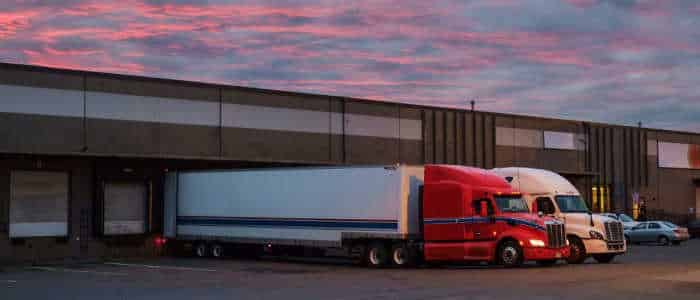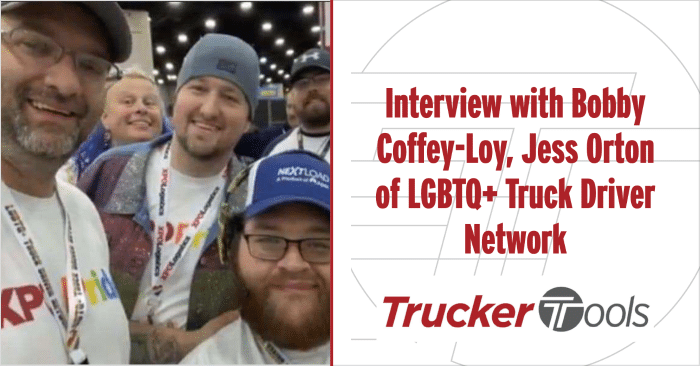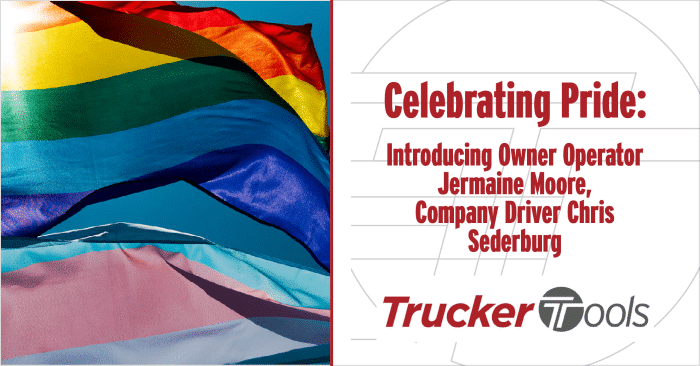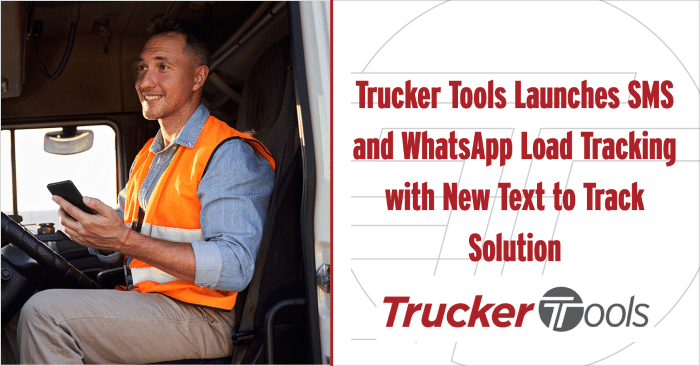Say hello to Sara Buggs, a first-year trucker based out of Knoxville, Tenn., who achieved her life-long dream of becoming a trucker in December of 2019. Sara got her start in trucking at 41 as a Hazmat driver with Skyline Transportation and today drives dry van. She absolutely loves her new career in trucking and is a big fan of the Trucker Tools driver app and its time-saving features. Trucker Tools recently had the chance to speak with Sara and learn more about her first year on the road, why she got into trucking, and how she saves time and money on the road.
Sara, thanks for speaking with us today. Can you tell us about what you do?
“I run out of Knoxville, Tenn., as a company driver doing dry van. It can be dry van with Hazmat, auto parts, things of that nature. But I’ve also done tanker, which is not your traditional tanker, but where they put the liquid barrels in the dry van and it’s considered tanker, just because of the kind of load that it is and the volume. When you say tanker, people always think of the big tanker trucks on the road, but it can actually be dry van and still be categorized as tanker.”
How did you get into trucking?
“I am a baby! I started with my first trucking company, Skyline Transportation, in December of 2019. That’s when I officially started driving for a company. I’d wanted to be a trucker since I was little. My great uncle was my hero. He was a driver for a long time. I don’t know how many years he did it, but it was forever. When I was a kid, he’d come get me when he came into town and put me up in the truck. I’d get to sit there and play with the steering wheel and all the controls. He had a little bulldog that he took over the road with him. The dog’s name was Dammit, which is the craziest name I’ve ever heard for a dog. My great uncle was my hero and that’s what I grew up seeing. Every time I would see him coming down the road, I would get so excited. My neighbors, a couple that lived next door that did flatbed together, also drove. I always saw them pulling up with their trailers and trucks and it was so cool.
Trucking was always in the back of my mind. After my divorce and once my ex-husband and I got to a good place, I knew I could go for it. So at 41 years old, here I am starting my trucking my career and I love it! I always knew I wanted to do it, ever since I was little. There’s always a blessing in every storm. Unfortunately, the marriage didn’t work out, but life has become much better since then and I’m finally getting to do what I’d always wanted to do. I absolutely love it. I didn’t get to travel much when I was younger because my mom didn’t know how to drive, so I was just up in the country, playing in the woods and stuff like that as a kid. But now, I’m able to see things that I’ve never seen before and I’m able to do things that I’ve never done before. I do make my children a priority and come home at least three days/week to be with them. Even though it came at age 41 instead of when everyone else was experiencing it, I think I have a better appreciation for trucking now at this age.”
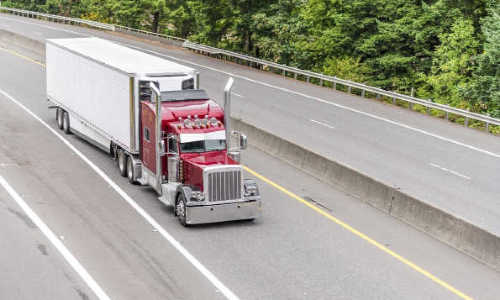
What’s it like driving Hazmat?
“I don’t drive Hazmat now, but I used to. I did drive Hazmat with the company I started out with, Skyline Transportation. But just last week I started with a new company and I don’t do Hazmat with this new company. But Hazmat will be on my radar in the future because I do want to go back into it. I haul auto parts now for the most part, but I eventually will be going for my TWIC (Transportation Worker Identification Credential) card so that I can go pick up from ports.
Driving Hazmat was very intimidating to start with. It sounded pretty scary, but once you go through the manual and testing to get certified for Hazmat, you become more confident in your abilities so it’s not as intimidating or scary because you know how to handle those situations. Hazmat is not as bad as you think, once you become familiar with how to handle situations, secure your loads and make sure that everything is as safe as it can be.”
How do you think your Hazmat endorsement has helped you in your career?
“I’m really thankful that Hazmat came on the front end of my career. Most people don’t start their driving careers going head-first into Hazmat, and I did. I signed on with Skyline and they’re a Hazmat carrier, so it’s mandatory that you have a Hazmat endorsement. It caused me and has made me become a better driver because there’s a different way you have to secure Hazmat freight. There are different guidelines that you have to follow and there are different procedures that you have to perform in case of an accident. I feel like having all of that training on the front end has made me a better driver now. With the Hazmat training, you’re not just going into it for training to drive the truck. With the Hazmat endorsement, you’re getting trained on load securement and more training on safety than you would if you were just doing typical dry van with dry goods that aren’t a high risk. I feel like it’s made me a much better driver, much more aware and much safer because of that.”

We recently updated the Trucker Tools driver app with a new design. How are you liking the new version of the app?
“The recent update to the Trucker Tools driver app made all the difference. You can find everything a lot more easily. Now, with the different icons and the side menu, it’s a lot easier to see what all the features do. Having the menu at the bottom is extremely helpful.
When I go to plan my route, my absolute favorite part is that it gives the directions and you see how long it will take to get to that specific destination. With the HOS regulations, we are always on the clock. If we can’t make it to certain place in time, it may mean the difference between us parking at a truck stop or parking on the side of the interstate or on an exit or on-ramp. So being able to see how long it will take to get to that specific area helps us decide where to stop.
A lot of the truck stop apps like Pilot Flying J and Loves will find you truck stop locations in the vicinity of where your route is, but Trucker Tools’ truck stop guide shows truck stops right on my route right off the interstate, so I’m not taken off my route. I’ve been on routes before where I’ve used Pilot’s app and it’s taken me 20 miles out of my way because it was the closest one.”
I had a brokered load that I took about two months ago that was tracked through Trucker Tools’ driver app. The broker told me I would receive a link and that the load would be tracked through Trucker Tools and I was like, ‘No way! I already use Trucker Tools!’ I had seen the load tracking feature in the app before, but before that particular load, I’d never tracked anything through Trucker Tools. I received a link by text message from the broker. To see the load tracking in action was pretty cool. It was really neat. Everything kind of came first circle.
Once I got the link via text message from the broker, I just tapped on the start track button and typed in my trailer number for them. I was able to take a photo of my bill and communicate with them through the app. If I hadn’t had the Trucker Tools driver app, I would have had to call the broker because they were completely new to me and I’d never dealt with them before.
Everything was housed right there in the app, so using the load tracking was really convenient. I didn’t have to fool with trying to find a phone number or scrolling back through my call log or writing down names. Everything was just right there all together in the Trucker tools driver app, so I was able to give them all the info and details they needed without doing much of anything really. I thought, ‘Oh, my goodness! This is amazing.’ Other load tracking systems can be much more complicated, unfortunately.”
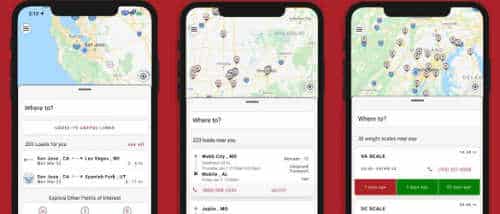
What has surprised you in your first year as a trucker?
“Most people outside of trucking don’t realize how much a truck weighs and how hard it is to stop a big truck. We typically refer to cars and trucks on the road not hauling freight as four-wheelers. Sometimes four-wheelers are completely oblivious to what is going on around them. You’ve got people who will zip in front of you, pull out in front of you or swerve. They cut you off when they’re getting onto the interstate onto the on-ramp and then drive slowly.
As a truck driver, you have to predict what other drivers are going to do. There are so many things that could happen in that moment and you have to try to predict what they’re going to do so that you can make the safest move for everyone. As a trucker, you can’t be at full speed on the interstate and hit your brakes just because someone in a car in front of you is being indecisive. It’s very difficult to make decisions in situations like that where there is no time, it’s unpredictable and you’ve got 40 tons of weight that you’re responsible for. A lot of people are on their cell phones. You have to be on point and alert at all times. Cars have hydraulic brakes and we have air brakes. Air has to go through the hoses and the chambers to stop. It takes a lot more to stop a truck than it does a car, and most people don’t have that knowledge.”
To learn more about Sara, follow her on Instagram or Twitter.
If you’re looking for more time and money-saving tips, read Three Ways To Find Reloads with the Newest Version of Trucker Tools’ Free Driver App.
To download the Trucker Tools free driver app, visit https://www.truckertools.com/carriers/.
